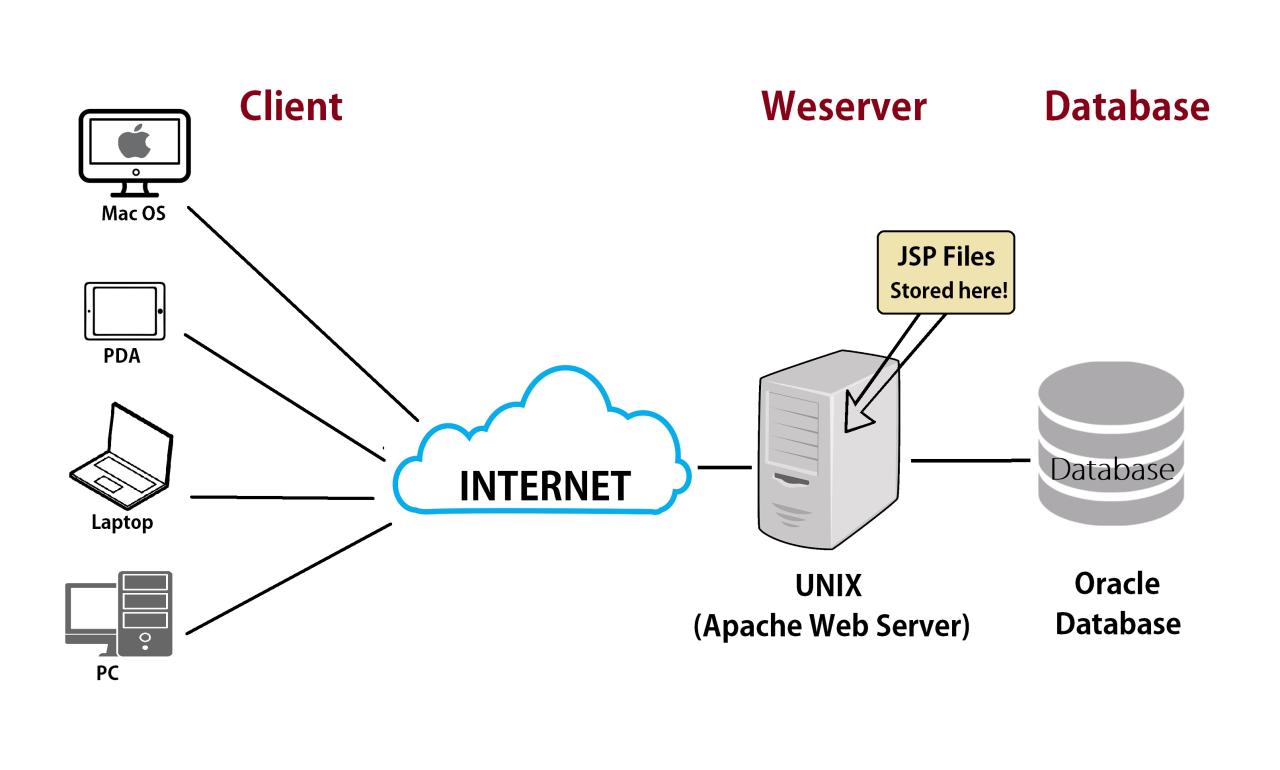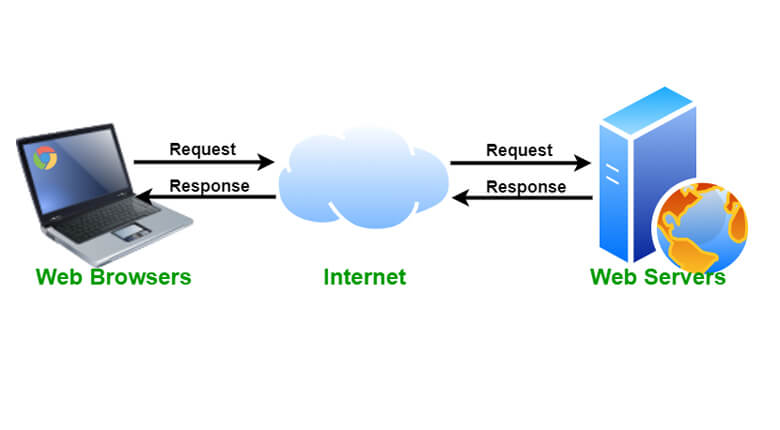Web servers, the unsung heroes of the internet, are the engines that power our digital world. These powerful machines act as intermediaries, serving up websites, applications, and digital content to billions of users around the globe. From the moment you type in a website address, a web server springs into action, processing your request, retrieving the necessary files, and delivering them to your browser, all within a fraction of a second. Without web servers, the vast expanse of the internet would cease to exist.
Think of a web server as a sophisticated librarian, meticulously organized and ready to fulfill your requests for information. You, the user, are the reader, and the web server is the librarian. You submit your request for a specific book (website) by entering the address (URL) into your browser. The web server, armed with its knowledge of the library’s vast collection, locates the book and delivers it to you. The web server’s role is not limited to serving static content; it also plays a crucial part in dynamic web applications, processing data, executing scripts, and interacting with databases to deliver a personalized and interactive experience.
Web Server Performance Optimization

A high-performing web server is crucial for providing a seamless and enjoyable user experience. Slow loading times and server errors can lead to frustrated users and lost business. Optimizing your web server’s performance is essential for ensuring a smooth and efficient operation.
Caching
Caching is a technique that involves storing frequently accessed data in a temporary location, such as the web server’s memory or a dedicated cache server. This allows the server to quickly retrieve the data without having to process it each time, significantly reducing response times.
- Browser Caching: This involves storing static files (images, CSS, JavaScript) in the user’s browser, reducing the need to download them again on subsequent visits. This can be implemented using HTTP headers such as
Cache-ControlandExpires. - Server-Side Caching: This involves caching dynamic content generated by the web server, such as database queries or complex calculations. Frameworks like PHP, Node.js, and Ruby on Rails provide caching mechanisms.
- Content Delivery Networks (CDNs): CDNs are networks of servers distributed globally, caching content closer to users. This reduces latency and improves delivery speed, especially for users located far from the origin server.
Load Balancing
Load balancing distributes incoming traffic across multiple servers, preventing a single server from becoming overloaded. This ensures that the web server remains responsive even under high traffic conditions.
- Round Robin: This method distributes traffic evenly across servers in a rotating fashion.
- Least Connections: This method sends traffic to the server with the fewest active connections.
- Weighted Round Robin: This method allows for assigning different weights to servers, giving priority to servers with higher capacity.
Monitoring Web Server Performance
Monitoring web server performance is crucial for identifying bottlenecks and proactively addressing issues.
- Server Metrics: Tools like
top,htop, andpsprovide real-time information about CPU usage, memory consumption, and process activity. - Network Metrics: Tools like
netstatandifconfigprovide information about network traffic, bandwidth usage, and connection status. - Web Server Logs: Analyzing web server logs (e.g., Apache access logs) can provide insights into traffic patterns, request times, and error occurrences.
Server Hardware and Software
The choice of server hardware and software plays a significant role in achieving optimal web server performance.
- CPU: A powerful CPU is essential for handling complex computations and processing multiple requests simultaneously.
- RAM: Sufficient RAM is crucial for caching data and keeping frequently accessed files in memory.
- Storage: Fast storage (e.g., SSDs) can significantly improve read and write operations, reducing latency and improving response times.
- Operating System: Choosing a lightweight and efficient operating system, such as Linux, can optimize resource utilization.
- Web Server Software: Apache and Nginx are popular web server software options known for their performance and scalability.
Web Server Administration

Web server administration encompasses the tasks necessary to keep a web server running smoothly and securely. This involves a range of activities, from monitoring performance and troubleshooting issues to implementing security updates and managing user access. Effective web server administration is crucial for ensuring the website’s uptime, performance, and security.
Monitoring Web Server Performance
Monitoring web server performance is essential for identifying potential problems and ensuring optimal website operation. Regular monitoring allows administrators to track key metrics like CPU usage, memory consumption, disk space, and network traffic. This helps identify bottlenecks, resource constraints, and potential performance issues.
- System Resource Utilization: Monitoring CPU, memory, and disk space usage helps identify resource-intensive processes or potential bottlenecks. For example, a high CPU load might indicate a resource-intensive application or a security threat.
- Network Traffic: Tracking network traffic patterns helps identify potential security threats or bandwidth issues. Unusual spikes in traffic or frequent connections from suspicious IP addresses might indicate a potential attack.
- Website Response Time: Monitoring website response time ensures the website is loading quickly for users. Slow response times can lead to user frustration and negatively impact the user experience.
- Error Logs: Reviewing error logs helps identify and troubleshoot technical issues. Error logs contain information about software errors, configuration problems, and other issues that might affect website performance.
Troubleshooting Web Server Issues
Troubleshooting web server issues is a crucial part of web server administration. When problems arise, administrators need to identify the root cause, implement solutions, and restore website functionality. This often involves analyzing error logs, examining server configurations, and testing potential solutions.
- Error Logs: Error logs provide valuable insights into website problems. Administrators can use error logs to identify specific errors, pinpoint the source of the problem, and understand the context of the issue.
- Server Configuration: Examining server configuration files helps identify incorrect settings or potential conflicts that might be causing problems.
- Network Connectivity: Checking network connectivity ensures the server can communicate with other systems and the internet. Issues with network connectivity can lead to website downtime or slow loading times.
- Software Updates: Outdated software can be vulnerable to security threats and may contain bugs that can cause performance issues. Regularly updating software is crucial for maintaining website security and stability.
Implementing Security Updates
Security updates are essential for protecting web servers from known vulnerabilities. These updates patch security holes and vulnerabilities that could be exploited by attackers. Implementing security updates promptly helps minimize the risk of security breaches and protect sensitive data.
- Operating System Patches: Operating system patches address vulnerabilities in the underlying operating system. Regular updates are essential for keeping the server secure from known vulnerabilities.
- Web Server Software Updates: Web server software updates patch vulnerabilities in the web server itself. These updates are crucial for protecting the server from attacks targeting the web server software.
- Application Updates: Application updates address vulnerabilities in web applications. These updates are essential for protecting the server from attacks targeting specific applications.
- Firewall Rules: Implementing strong firewall rules helps block unauthorized access to the web server. Firewall rules define which traffic is allowed to access the server and which traffic is blocked.
Regular Maintenance and Updates
Regular maintenance and updates are crucial for ensuring the stability and security of a web server. This involves tasks such as:
- Software Updates: Regularly updating software, including the operating system, web server software, and applications, is essential for patching security vulnerabilities and ensuring compatibility with newer technologies.
- System Backups: Creating regular backups of the server data and configuration files is crucial for disaster recovery. Backups allow administrators to restore the server to a previous state in case of data loss or system failure.
- Performance Tuning: Regularly monitoring and optimizing server performance helps ensure the website is running efficiently. This involves identifying and addressing bottlenecks, optimizing server configuration, and implementing caching strategies.
- Security Audits: Conducting regular security audits helps identify and address potential security risks. Security audits involve scanning the server for vulnerabilities, reviewing security configurations, and assessing the overall security posture of the server.
The Future of Web Servers
The landscape of web server technology is constantly evolving, driven by advancements in computing power, network infrastructure, and user demands. Emerging trends like serverless computing, edge computing, and containerization are fundamentally changing how web servers are designed, deployed, and managed. This evolution promises to enhance performance, scalability, and security while simplifying development and deployment processes.
Serverless Computing
Serverless computing represents a significant shift in web server architecture, allowing developers to focus on building application logic without managing underlying infrastructure. In a serverless environment, code is executed in response to events, such as API calls or data changes, without the need for dedicated servers. This approach offers several benefits:
- Reduced Operational Overhead: Serverless platforms handle server provisioning, scaling, and maintenance, freeing developers from these tasks.
- Cost Optimization: Users pay only for the resources consumed during code execution, leading to cost savings compared to traditional server-based deployments.
- Enhanced Scalability: Serverless platforms automatically scale resources based on demand, ensuring applications can handle traffic spikes without performance degradation.
Edge Computing, Web server
Edge computing brings processing power closer to users, reducing latency and improving performance for applications that require real-time interactions. This approach is particularly relevant for applications like streaming services, gaming, and IoT devices, where responsiveness is critical.
- Reduced Latency: By processing data closer to users, edge computing minimizes the time it takes for requests to reach the server and responses to return, resulting in a smoother user experience.
- Improved Bandwidth Utilization: Edge computing reduces the amount of data that needs to be transmitted over long distances, optimizing bandwidth usage and lowering network costs.
- Enhanced Security: Processing data at the edge can improve security by reducing the attack surface and minimizing the amount of sensitive information that needs to be transmitted to centralized servers.
Containerization
Containerization is a technology that packages applications and their dependencies into self-contained units, known as containers. This approach simplifies deployment and management by ensuring that applications run consistently across different environments.
- Portability and Consistency: Containers ensure that applications run the same way regardless of the underlying operating system or infrastructure, eliminating environment-related issues.
- Faster Deployment: Containers can be deployed quickly and easily, reducing the time it takes to bring new applications online.
- Resource Optimization: Containers share resources efficiently, allowing multiple applications to run on the same server without performance degradation.
Final Wrap-Up
In the ever-evolving digital landscape, web servers remain indispensable, evolving alongside technological advancements. As the internet continues to grow in complexity and demand, web servers are continually optimized for speed, security, and scalability. From the humble beginnings of the web to the sophisticated applications we use today, web servers have played a pivotal role in shaping our digital world. Understanding their intricate workings is essential for anyone seeking to navigate the complexities of the internet and harness its power.
Web servers are the backbone of the internet, silently powering websites and applications. But even these powerful systems can benefit from a touch of personal expression. If you’re looking for a thoughtful way to show your dad you care, try crafting a personalized gift with these easy fathers day crafts.
From there, you can even consider building a simple web server to showcase your creation and share it with the world.




